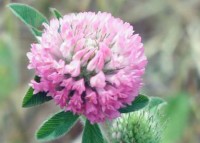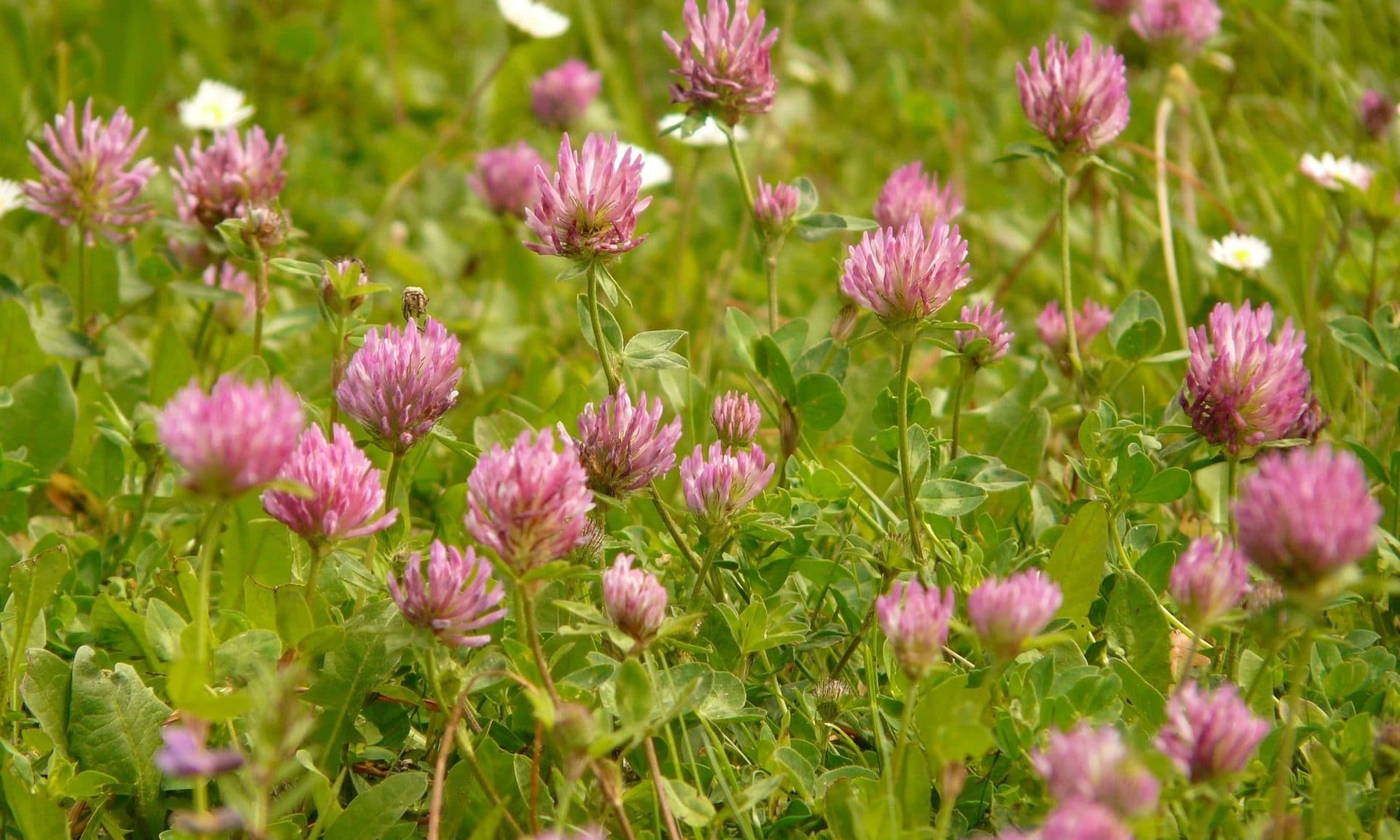 Red Clover (Trifolium pratense) is a perennial which belongs to the family of Leguminosae. Other names for red clover are cow clover, purple clover and bee-bread. It’s a perennial with trifoliate leaves and pink to red flowers. Red clover has hairy stemmed to prevent ants from easily climbing the stems. The plant derives its name in part from its flowers, which are fragrant and can range in color from white to a dark red. Red clover is a wild and very common plant. Red clover is abundant throughout Europe, Central and Northern Asia from the Mediterranean to the Arctic Circle. Red clover has been naturalized to grow in North America. As the other name, “bee-bread” suggests, red clover produces a honey but far less than white clover.
Red Clover (Trifolium pratense) is a perennial which belongs to the family of Leguminosae. Other names for red clover are cow clover, purple clover and bee-bread. It’s a perennial with trifoliate leaves and pink to red flowers. Red clover has hairy stemmed to prevent ants from easily climbing the stems. The plant derives its name in part from its flowers, which are fragrant and can range in color from white to a dark red. Red clover is a wild and very common plant. Red clover is abundant throughout Europe, Central and Northern Asia from the Mediterranean to the Arctic Circle. Red clover has been naturalized to grow in North America. As the other name, “bee-bread” suggests, red clover produces a honey but far less than white clover.
Red clover also grows well in grazing land where it binds nitrogen into the soil. Planting red clover will improve the soil because the roots have special nodules that house nitrogen-fixing bacteria. These bacteria can grab nitrogen from the air in the soil and make it available to the plant. When the red clover plant decomposes it makes that nitrogen available to the soil.
Medicinal properties of red clover
Red clover has many medical properties. The flowering heads of red clover improve urine production, circulation of the blood and secretion of bile. They also act as detergent, sedative and tonic. Red clover has the ability to loosen phlegm and calm bronchial spasms. The fluid extract of red clover is used as an antispasmodic and alterative. Red clover is used in the treatment of skin complaints (especially eczema and psoriasis), cancers of the breast, ovaries and lymphatic system, chronic degenerative diseases, gout, whooping cough and dry coughs. Red clover is one of the richest sources of isoflavones. Isoflavones are effective in treating several conditions such as hot flashes, cardivascular health and osteporosis. Red clover also contains minerals such as calcium, magnesium, chromium, potassium, and vitamins such as niacin, thiamine and vitamin C. Red clover ointments are used to treat skin problems such as psoriasis and eczema.
Red clover isoflavones
Isoflavones can be extracted from red clover. These isolated isoflavones have not the same benefits as the whole red clover plant but they are used to treat menopause, hot flushes, cardiovascular health and bone loss. On dry matter basis, 100 g red clover contains 10 x more isoflavones than soy. According to the database of the State University of Iowa 100 g dry clover contains 1322 mg formononetin en 833 mg biochanin A.
References
Howes JB, Sullivan D, Lai N. The effects of dietary supplementation with isoflavones from red clover on the lipoprotein profiles of postmenopausal women with mild to moderate hypercholesterolemia. Atherosclerosis. 2000;152(1):143-147.
Husband A. Red clover isoflavone supplements: safety and pharmacokinetics. Journal of the British Menopause Society. 2001;Supplement S1:4-7.
Joanna E. Burdette et al. Trifolium pratense (Red Clover) Exhibits Estrogenic Effects In Vivo in Ovariectomized Sprague-Dawley Rats. J. Nutr. 2002 132: 27-30.
Nobuyo Tsunoda et al. Absorption in Humans of Isoflavones from Soy and Red Clover Is Similar. J. Nutr. 2002 132: 2199-2201.
Van de Weijer PH et al. Isoflavones from red clover (Promensil) significantly reduce menopausal hot flush symptoms compared with placebo. Maturitas 2002;42:187-193
Darin Ingels. Red Clover Extract Reduces Hot Flashes in Menopausal Women. Healthnotes Newswire 2002 Oct 10.
Isoflavones from red clover improve systemic arterial compliance but not plasma lipids in menopausal women. J Clin Endocrinol Metab 1999 Oct;84(10):3647
Absorption in humans of isoflavones from soy and red clover is similar. J Nutr 2002 Aug;132(8):2199-201
A biochanin-enriched isoflavone from red clover lowers LDL cholesterol in men. Eur J Clin Nutr. 2004 Mar;58(3):403-8
Isoflavones from red clover (Promensil) significantly reduce menopause hot flush symptoms compared with placebo. Peter H. M. van de Weijera et al
Trifolium pratense (Red Clover) Exhibits Estrogenic Effects In Vivo in Ovariectomized Sprague-Dawley Rats. J. Nutr. 132:27-30, 2002
